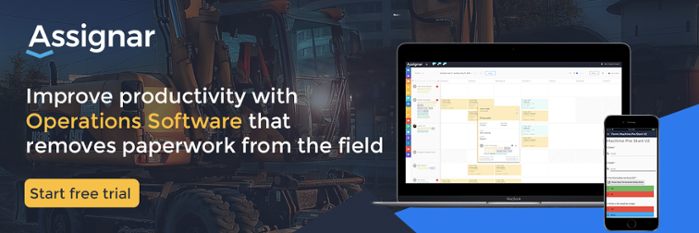How Do Contractors Successfully Engage In construction Technology Deployment
Successful construction technology deployment involves more than the adoption, integration and activation of new construction operations management tools. In fact, when designed correctly, the new construction-focused software, hardware and apps will likely promote efficient and effective adoption of digital strategies into a construction work environment. Such software is crafted for intuitive integration and functionality. Due to standardization of functions, even most of the learning curb has been removed from the process of successful engagement within industry activities.
In this article, we focus on the five states necessary for successful adoption of modern construction technology.
5 Stages of Construction Technology Deployment
Deployment of new construction software and tech tools into your workforce and asset allocation and planning processes may seem overwhelming at first. However, taking time to lay a proven foundation for adoption, integration and activation can help smooth the path to quicker success in all aspects of the procedure.
Herein are five critical stages necessary for the successful deployment of new construction technology:
Step 1 – Define The Merits of the New Construction Technology System
To reach a goal, you must have clear understanding of why you need reach that end. In defining the merits of the new tech solution include the following statements of detail:
- Existing operational problems
- Priorities or integration
- Stepping stones for success
- Overall all concept of how the solution will be implemented
- A comprehensive analysis of ROI for successful roll-out
- An estimated scope of budget, schedules and conclusions.
Step 2 – Define and Secure Necessary Resources
To successfully deploy your new construction technology, you must confirm timely access to all project-dependent resources, including:
- Time and availability of project managers
- Someone in senior management with clearance to manage overall budget and strategies
- A promoter, that is someone who believes in the project, understandings how the new technology functions and has a drive to reap the associated benefits of deployment
- Representatives from each sector of the workforce and asset management
- AND A strong IT support team.
Step 3 – Document the Implementation Process
It’s all about advanced understanding of the implementation procedures. To be successful in this integration process, you will need to:
- Layout the steps of integration
- Document workflow
- Incorporation methods for feedback
- Collaborate with department heads and workforce
- AND be willing to adjust when necessary.
Step 4 – Involve, Advise and Routinely Update Your Workforce
To successfully deploy new construction technology, contractors must make sure that there is active acceptance and participation by field workers, equipment operators, subcontractors and vendors. To this effect, successful contractors engage in:
- Conversation with the team
- Prior feedback
- Prior training
- Comprehensive explanations when and where necessary
- Realign organization initiatives and incentives
- AND Properly equip all personnel for the challenge of change.
Step 5 – Implement The Plan
You enter the gate. Time to implement. Ensure that every involved party understands the:
- Scope of the project
- Location and availability of necessry resources
- Details of dependencies
- The schedule, step-by-step
- AND The requirements of participation.


